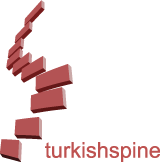ABSTRACT
Aim:
Cervical spine injuries are the most challenging injuries in the vertebral column. Because of the importance of the passing neurologic structures in the cervical spinal column, morbidity and mortality of the injury increases. We aimed to evaluate the frequency of cervical dislocations in a cervical injured patient group.
Patients and Methods:
We retrospectively evaluated our cervical injured patient group. The study group included the patients, who were treated in our clinic because of cervical injuries between 1999 and 2009. In a series of cervical injured patients (n:142), cervical dislocations were scoped. Age, gender, trauma type, anatomical localizations and neurological status of the patients were evaluated.
Results:
There were 40 cervical dislocations in 142 cervical injured patients. One of them was atlanto-occipital dislocation, 10 C1-2, 3 C2-3, 4 C3-4, 3 C4-5, 10 C5-6, 7 C6-7 and 2 C7-T1 dislocations. Mean age of the patients was 41.2 years (4-76), 27 male, 13 female patients, 5 with minor traumas, 17 with traffic accidents and 18 because of a fall from height.
Conclusions:
Cervical dislocations are a big group of cervical injuries. Mostly injured areas are the upper and lower cervical junctional areas which are more mobile.



